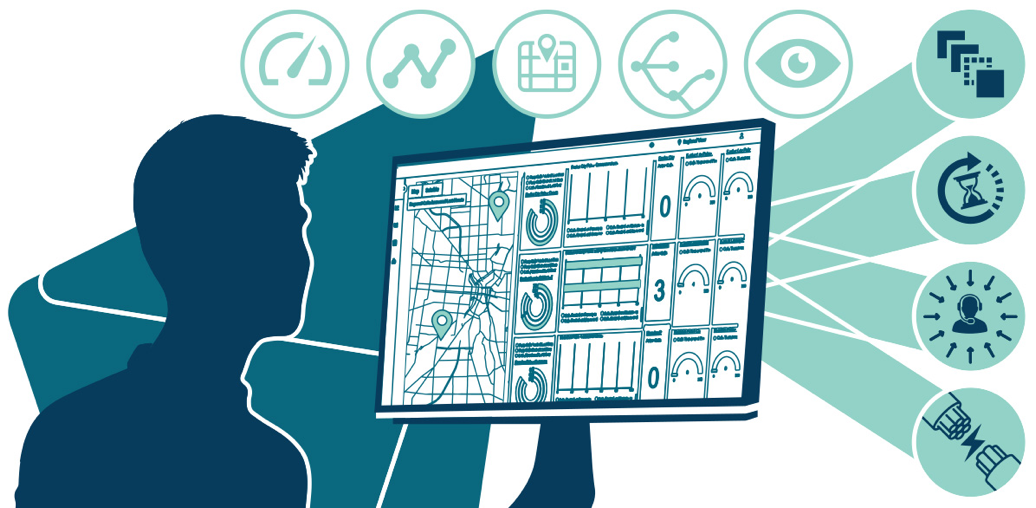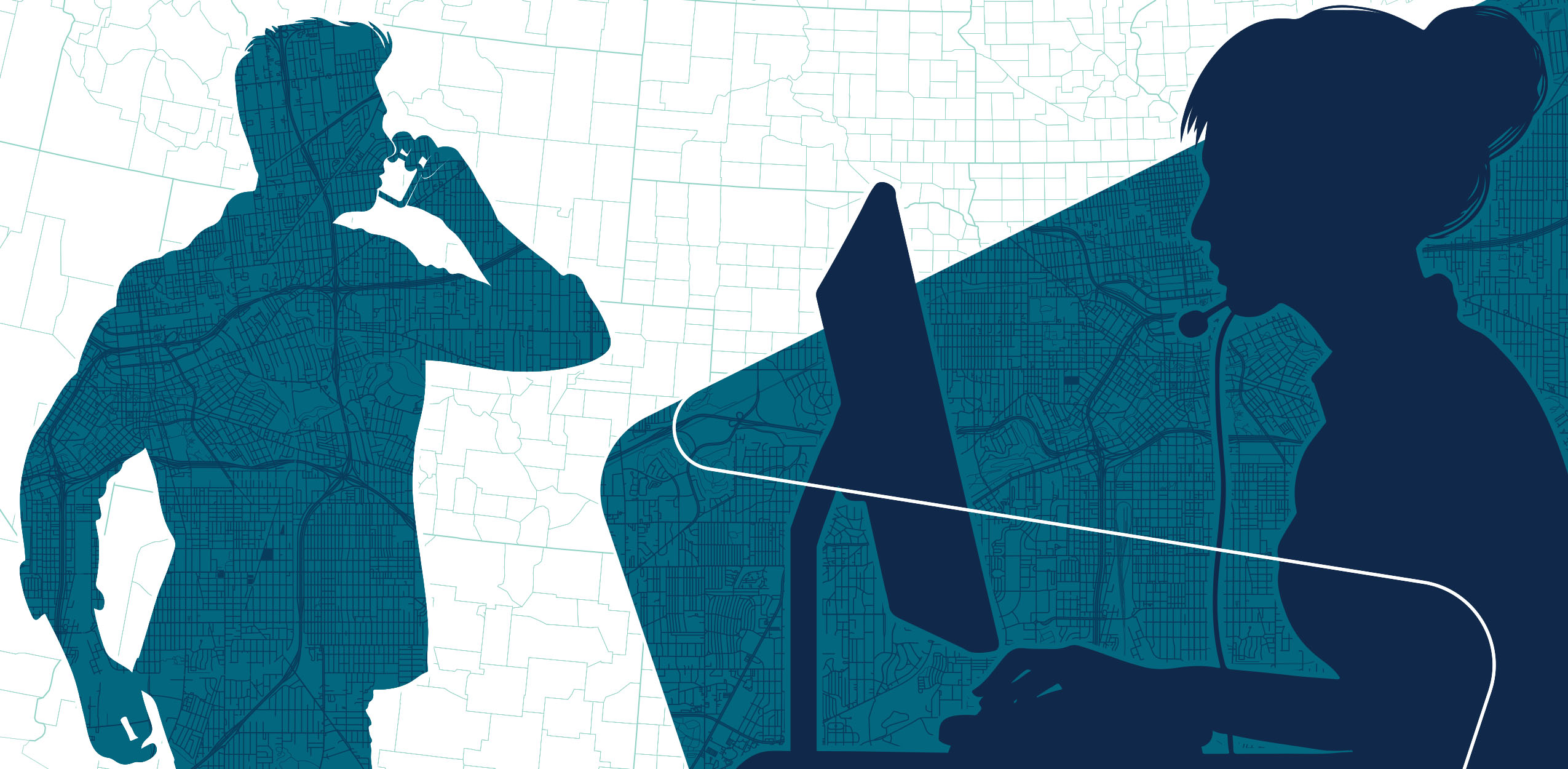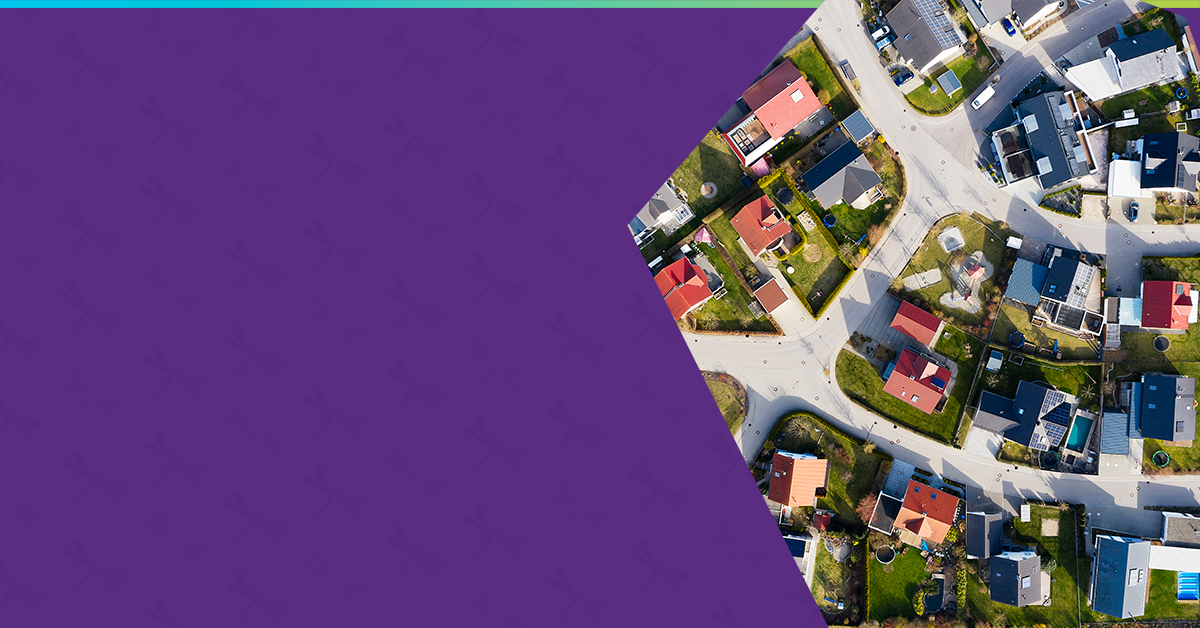The Cloud Story is a Data Story
Those of us from the information technology profession did you a disservice many years ago when we first drew the early concept of the Internet—of...
In the coming weeks, Intrado will introduce the Sonic EDGE, an alternate configuration of the Sonic G3, and a cutting-edge appliance that gives Public Safety Answering Points (PSAPs) the flexibility and mobility to take 911 calls from virtually any location and provides 4G/5G connectivity redundancy and survivability in the event of an outage. The inspiration for these offerings was, in part, a reaction from our innovation teams, who were troubled by natural disasters in the news years ago that knocked PSAPs offline at a time when they were needed most. But our product developers also had one eye on the future needs of the PSAP and how technologies are evolving to create value and rethink the economics for users, closer to where they live and work—closer to the edge of the information and communications network.
In a previous post, The Cloud Story is a Data Story, I spoke about our hybrid cloud approach and some of the benefits of moving storage and computing to the cloud. As the amounts of NG911-related data the PSAP will have to absorb are set to grow dramatically, public safety will likewise need to take better advantage of the scale of the cloud. So, why now introduce another piece of IT jargon to the discussion—Edge Computing? In part because gathering, processing, and storing all that data in the cloud is only one piece of the NG911 story. What we do with all that data to improve 911 outcomes pushes us to look at all of the information and communications technologies at our disposal, including those at the edge of the network.
One of the hardest concepts to convey on this topic is how we view edge computing as part of the infrastructure of the information and communications network when many of these devices, like the Sonic EDGE, end up sitting on your desktops. We’re not looking at taking IT resources from your on-premises data center, lifting them to the cloud, only to now bring them back onto your premises—confusing as that may sound. Instead, think of the edge as the transactional part of the network, closer to where the data are generated and used in real, or near real, time. We’re trying to move from your PSAP looking out to find out what’s going on, to reaching out and pulling the world into your PSAP. For public safety, edge computing can offer a gateway to powerful data and technologies in a controlled and expeditious environment.
Edge is already at work all around us, usually working behind the scenes, delivering experiences. Netflix can deliver you a 4K movie without any hourglass glitching by storing and streaming movies through a “content delivery network” at the edge of the broadband network. And in some way, Amazon is building a physical edge in their distribution network as they push toward same-day Prime deliveries by constructing distribution centers in your community or somewhere nearby (they seem to be popping up everywhere, no?).
In the PSAP today, the closest thing to the edge is most likely a laptop or a workstation of some sort. Mostly, they are islands of isolated computing and applications. It’s just the way that innovation was added over time in response to new regulatory and community wants and needs. That model worked for many years to support voice calls, but it’s very hard to share NG911 data and aggregate analytics for a fully informed emergency response with a traditional desktop computing approach. I’m sure we all feel that there’s got to be a better way than to have all those monitors and keyboards and annoying fan noise!
With edge computing, we can reimagine an “operating system” for critical communications that can incorporate the kind of security and virtualization from which other industries benefit greatly. Those islands of computing exist across the workflow, with dedicated hardware and systems that serve only one operation or action. With virtualization, we can take advantage of storage and computing power regardless of which physical box the data reside.
So, how might we apply that concept to NG911—to a highly secure and reliable network? What are the “use cases,” as we say? Use cases are more than just about finding the places where we can sell a new product or service. Developing potential use cases for a new technology helps us think about the problems we are trying to solve as we try to innovate.
Let’s explore a few of the ways in which edge computing could add value to the critical communications workflow, including:
Resiliency via alternative routing and caching
Low latency applications (minimal data delivery delay)
Greater information sharing and integrations
Resiliency: using the edge as a hedge
The more that our lives rely on information and communications technologies, the more that we think about redundancy. A stock trading house, call center, or manufacturing assembly line cannot bear network downtime, as their operations would come to a crashing halt. So, we just add a backup or redundant network connection, right? Perhaps, but any network design is filled with complexity, cost, and risk. They have to be configured, tested, maintained, and secured.
Adding an edge device, however, provides a hedge against failure within the existing infrastructure. If a PSAP becomes inaccessible during a natural disaster or the like, you want the capability to move to another location where a mobile network is still available and stand up a telecommunicator position through a portable, purpose-built device. Similarly, should the routing network go away, you want to be able to cache the routing instructions (including the Forest Guide routing hierarchy of PSAP locations, for example) on an edge device so you can still take calls as long as you have access to the public telecom network.
We can also use edge computing to bring additional confidence as you make your cloud transition and struggle with concerns about potential failures. Having a physical device to fall back on, one that you can plug into your existing environment, and where everything works exactly the way that you are used to working, provides a fail-safe to help you move forward into more unfamiliar technological territories.
Latency: reducing the delays in decision making
We’re starting to hear the term latency more and more in the IT space, driven mainly by the evolution toward 5G networking. 5G promises to move the value of the network closer to the user—at the edge of the telecommunications network—in order to deliver greater broadband access at greater speeds. One way to look at speed is not just the transmission rate but the overall time it takes a packet of data to move between points in the system. 5G use cases for low-latency communications might include augmented-reality surgery or drone-based connected vehicle traffic avoidance systems, where reaction time is of the essence.
Those examples rely on millisecond (1000th of a second) tolerances, so it might be hard to find use cases of that nature in 911 call handling and dispatch. But it’s not too early to explore the value of data transmission and retrieval and the implications for public safety, especially in relation to cloud computing. While the computing definition of latency points to the concept of delay, the dictionary definition of latent or latency actually means something that lies dormant or has not yet revealed itself. So, where might some of those dormant applications lie for 911 latency?
In the world of voice-only calls, our latency scenarios were pretty much close to imperceptible delay. Zero delay is good. With NG911 applications, we likewise don’t want to wait for data to arrive or to be made useful to the first responders in the PSAP or in the field. But where NG911 seems to focus on gathering up and transmitting those data, the “quickly making them useful” part of that story will be just as important. For example, let’s take a big, potential bandwidth-hog video. We now have the capability to capture and transmit data to a PSAP; so what? What do you want to do with all those video streams? Watch the live view of an accident from multiple callers while talking to them over the phone and piecing together the scene? Or transmit the video to a first responder racing to the scene or pushing through a crowd?
All of this 5G/IoT-driven NG911 data will be raw, disparate, and collectively highly valuable. Where and how do we filter and analyze it all? Some will go directly to the telecommunicator, and a lot will go to the cloud, but the edge offers us an opportunity to capture and process that data quickly and efficiently between the endpoints. If we were able to create an edge feed to the PSAP, there would be an opportunity to pull the metadata (time, location, camera ID, etc.) and run an image or facial recognition application, or other analytics. With edge computing, we could envision a place to cache a feed locally as an intercept point between the source and the telecommunicator, preferably with an edge device right at the media source.
With NG911, we have to start to imagine the flow of data and how we want to use it. And then where best to process those data. Because video eats up so much memory and bandwidth, we spend an inordinate of time thinking about where to put the GPU, the graphics processing unit. Most people think of GPU as a chip that renders cool graphics for video gaming. And while that is true, this technology has evolved over the years to handle an incredible number of computational abilities, including machine learning and artificial intelligence. While the intent may have been to create better visualization, the use cases for contextual awareness have expanded greatly and could certainly help us here in public safety. Given that the GPU tends to be the most expensive component in any visualization chain, technologists are trying to maximize the investment in GPU by pushing it to the edge, as close to the user experience as possible. It seems like an opportunity to start to reveal some of those 911 benefits lying dormant.
Integration: seamless means more than closing the gaps
In the commercial world, technologists use edge computing to create a “seamless” customer experience. Retailers and service providers think about the so-called customer journey and try to integrate all the systems behind the scenes that engage with consumers across every touch point in the sales process. The closer they can get to the customer, the better they can tailor their offering to the customer's needs. The more responsive their interactions, the greater the customer satisfaction and loyalty. Checking on the status of an Amazon order through an Alexa voice command may be about as seamless as it gets.
An edge device can provide a gateway not just to the outside world but also between systems and functions within an organization. We have a lot of intelligent components in operation today across a jurisdiction that we could unify at the edge. Let’s start by looking for edge use cases within the PSAP, and then we’ll look out.
Let’s say the community I serve experiences a natural disaster, and I take my edge device with 5G connectivity home with me so that I can keep taking 911 calls. But my son’s school closes, and I get a call to come to pick him up. If I were at the PSAP, my position could be relieved, but I’m working remotely, so I need to somehow hit an “abandon” button that would automatically route my traffic to a colleague. Or if I lose connectivity at my house before I can abandon my station, I need the edge infrastructure to recognize that I didn't answer my last two calls, and the network would need to just automate the transfer and the abandonment of that station. Those scenarios are possible if we have some intelligence and communication at the edge.
We could also look to the edge as a gateway across agencies struggling to manage a rapidly evolving incident. One use case could be related to the deployment of a mobile command center, where proximity to such an incident could offer a more robust response. In a large industrial fire on a commercial campus, for instance, where the enterprise private network was compromised, and the macro mobile network was not effective inside the factory structures, drones could be deployed equipped with lightweight micro-cells that could scan for cameras, sensors, and cellphone signals. An ECC could deploy a mobile command center nearby, equipped with edge-enabled call/media handling and dispatch capabilities that could track and analyze the path of the fire, match that in real-time against the location of hazardous materials provided by the facility, and notify fire and hazmat first responders of the potential dangers.
With the adoption of edge technologies in public safety, the opportunities for innovation are limited only by our imagination. Connecting the dots, in real or near-real time, would likely result in better outcomes and better connections with the communities that we serve. But we know that the simpler the user experience that we provide, the more complexities we have to manage and orchestrate to make that happen. With the caching and processing of data at the edge, we can start to envision a more seamless response.
Responding to a more connected world
How can we quantify and plan for such complexities? Ericsson, a global leader in 4G/5G mobile communications networking, estimates that “By 2050, there will be 24 billion interconnected devices, meaning almost every object around us: streetlights, thermostats, electric meters, fitness trackers, water pumps, cars, elevators, even gym vests.” In anticipation, IT research house Gartner looks for organizations to take advantage of all that connectivity by moving upwards of 75% of their “enterprise-generated data [to be] created and processed outside a traditional centralized data center or cloud” by 2025, up from 10% in 2018.
So, if we assume that anything that can be connected to the Internet will be, we need to create IT architectures and systems—across data centers, hybrid clouds, and edge computing—that sort, filter, recognize, analyze, and curate all those data. Context, not clutter.
While we don’t need to boil the ocean, as they say, that vision of an exceedingly connected world should spark some discussions today around resiliency and how we ensure critical communications in a world that is increasingly dependent on information technologies. We need to create some mindshare about why and how we move and cache data with greater agility and how we orchestrate all those data points to create greater context and clarity when it matters most.

Those of us from the information technology profession did you a disservice many years ago when we first drew the early concept of the Internet—of...

At the end of 2022, the FCC (Federal Communications Commission) laid down the gauntlet on improving 911 reliability by issuing an order [FCC 22-88]...

These have been exciting times for us at Intrado with respect to our PSAP facing offerings. In June we announced VIPER NextGen, our cloud native call...

Data can be incredibly valuable; but like most things that are worth a lot, it needs to be maintained. That’s certainly true of 911 data. Ask anyone...